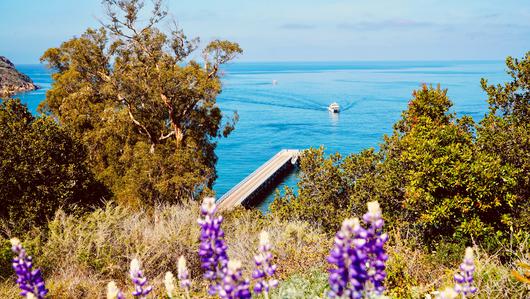Thinking of trekking through the pristine Lost Coast? Then it's time to step up your backpacking game with gear from California-based companies. It's important to be well-prepared, especially when hiking the entirety of the trail takes about three to four days. Here's the essential gear to bring when Lost Coast backpacking.
Backpack
Naturally, since it's a backpacking trip, the type of pack you use is critical. It's best to bring a bag that's comfortable to wear and capable of holding 45 liters or more—the more pockets, the better so everything is easily accessible.
Sleeping Bag
For serious backpackers, we recommend investing in a zero- to 15-degree sleeping bag, which will keep you quite toasty. Although temperatures may drop that low during your Lost Coast hike, it's always better to be prepared.
Sleeping Pad
A sleeping pad, for newbie backpackers, is akin to a yoga mat and is great to use during those long nights when you need to lay on the ground. It helps add insulation, keeping your sleeping bag and body off of the ground. Given that you'll be carrying this sleeping pad on your back throughout the trip, it's ideal to go with one as light as air.
Backpacking Pillow
While many avid backpackers consider this an extra item, a compressible pillow may be a solid purchase for those of you who often experience neck pain. If you decide to forgo this item, you can simply stuff jackets or clothing into the hood of your sleeping bag for a makeshift pillow.
Tent
A tent is one of the largest items you'll carry in your backpack—and is likely to the most expensive. But a high-quality, light-weight tent is worth investing in, particularly if you plan on doing additional backpacking trips.
Map and compass
Going old school is the best choice when venturing into the wilderness, so grab a map of the area and a compass before heading towards the unknown (well, so to speak). You can also go for the big guns and purchase a handheld GPS.
Hiking Boots
It goes without saying that having proper hiking boots is important—after all, you will be wearing them for at least three days. But not all boots fit all feet the same, so shop around until you find the best sturdy, comfortable boots for you.
Other Essentials
Now that you have all of your essential gear, here are other miscellaneous items to consider adding to your bag.
- Water bottle
- Water filters
- Tidal chart
- Flashlight
- Sunscreen
- First aid kit
- Firestarter kit
- Trekking poles
- Extra batteries
- Portable charger
- Extra layers and jackets






